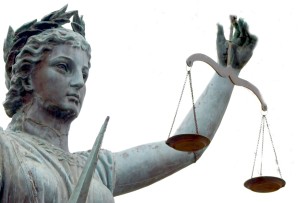By: Diana C. Castro
Last Tuesday, January 13th, in United States v. Hawkins, the Fourth Circuit affirmed in part, vacated in part, and remanded the judgment of the District Court for the District of Maryland convicting Hawkins of separate counts related to a carjacking and a subsequent arrest as a felon in possession of a firearm.
A Federal Grand Jury Indicted Hawkins on Four Counts; Hawkins Moved to Sever and Objected to the Admissibility of Evidence.
Count I alleged a carjacking in violation of 18 U.S.C. § 2119. Count II alleged that Hawkins knowingly possessed and brandished a firearm in furtherance of the carjacking, in violation of 18 U.S.C. § 924(c)(1)(A)(ii). Count III alleged that Hawkins, a convicted felon, knowingly possessed a loaded firearm, in violation of 18 U.S.C. § 922(g)(1). Lastly, Count IV alleged another felon in possession of a firearm charge, related to a separate incident. The government later chose not to proceed on Count IV.
Prior to trial, Hawkins moved to sever the carjacking counts from the felon in possession counts. However, the District Court denied the motion because it saw no reason as to why a jury would not be able to evaluate the evidence objectively.
Even though Hawkins pled not guilty as to all three counts, he conceded Count III prior to and during opening statements.
During trial, the government introduced two tape recordings where Hawkins admitted that he gambled and sold drugs for a living, and referenced the loaded firearm. Hawkins objected to the admission of this statement for lack of relevance to any issue because he had conceded his guilt as to Count III. Additionally, Hawkins argued the tapes constituted evidence of other crimes under Federal Rule of Evidence 404(b).
The District Court denied Hawkins’s motion to suppress the statement finding that the probative value of the statement substantially outweighed any undue prejudice. Moreover, the district court found that under Rule 404(b), the statement was admissible because it was evidence of Hawkins’s identity.
Ultimately, the jury found Hawkins guilty on all three counts.
The District Court Erred in Allowing Joinder of Counts I and II with Count III because the Charges are Not of a Same or Similar Character.
While Federal Rule of Criminal Procedure 8(a) permits very broad joinder, it is not so broad as to cover discrete and dissimilar offenses. After reviewing the record, the Fourth Circuit held that the carjacking counts and Count III were not of a “same or similar character.”
In its analysis, the Fourth Circuit distinguished United States v. Cole and United States v. Rousseau, a Fourth Circuit and a Ninth Circuit case proposed by the government. In contrast, the Fourth Circuit found the Fifth Circuit Court’s analysis in United States v. Holloway to be persuasive. Holloway held joinder improper on a factual scenario very similar to the one in the case at bar.
In reversing, the Fourth Circuit reasoned that the only connection between the carjacking counts and Count III was Hawkins.
An Error Involving Misjoinder Requires Reversal Only If the Misjoinder Results in Actual Prejudice.
Under United States v. Lane, a U.S. Supreme Court case, a misjoinder “affects substantial rights and requires reversal only if the misjoinder results in actual prejudice because it had substantial and injurious effect or influence in determining the jury’s verdict.”
Although the evidence against Hawkins on Count III was overwhelming, the evidence against him on Counts I and II was limited to a single witness’ testimony and Hawkins’ denial that he was involved in the crime. Thus, the Fourth Circuit concluded that it was possible that had the three offenses not been joined for trial, Count III’s prejudicial evidence would not have reached the jury, and Hawkins might have been acquitted of the carjacking counts.
There Was No Relation Between Hawkins’ Possession of a Firearm in Count III and Any of the Elements of the Carjacking Counts.
Against the government’s arguments, the Fourth Circuit held that all of the evidence on Count III and that on Counts I and II would not have been mutually admissible under Rule 404(b) had there been separate trials.
Judgment affirmed in part, vacated in part, and remanded.
The Fourth Circuit vacated Hawkins’s convictions under Counts I and II, remanded to the District Court for retrial on Counts I and II and for sentencing on Count III.

